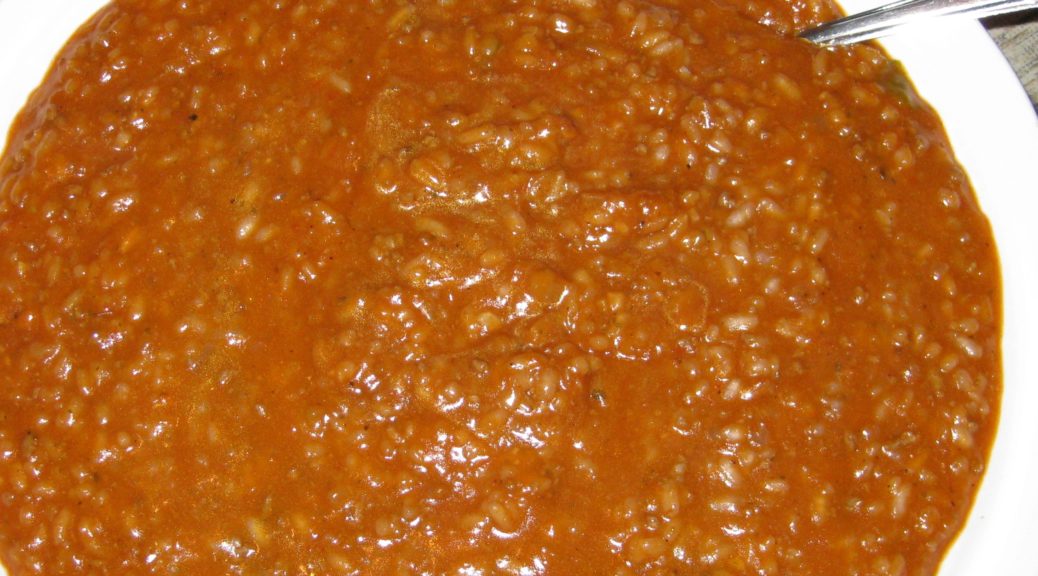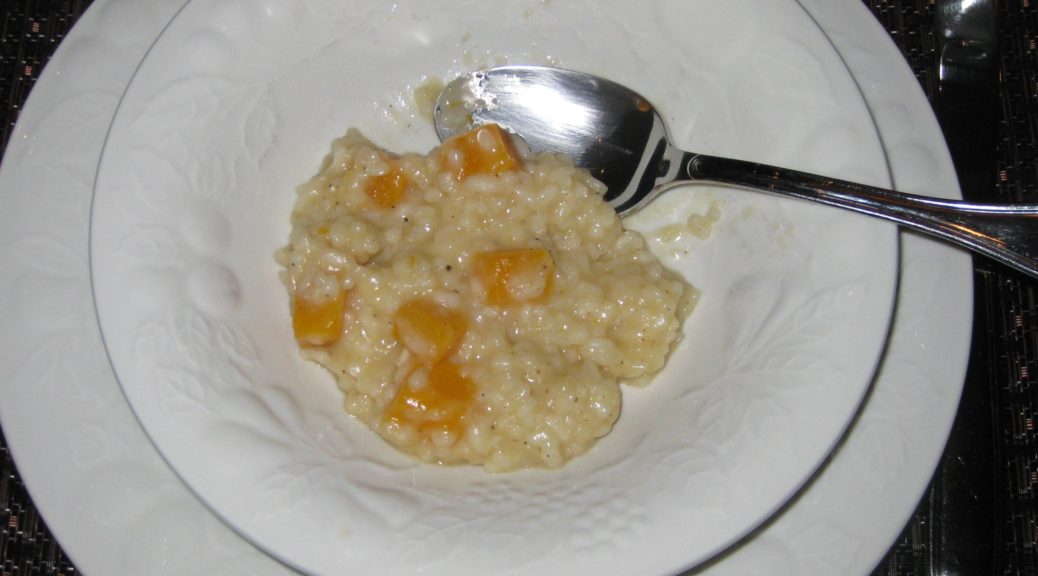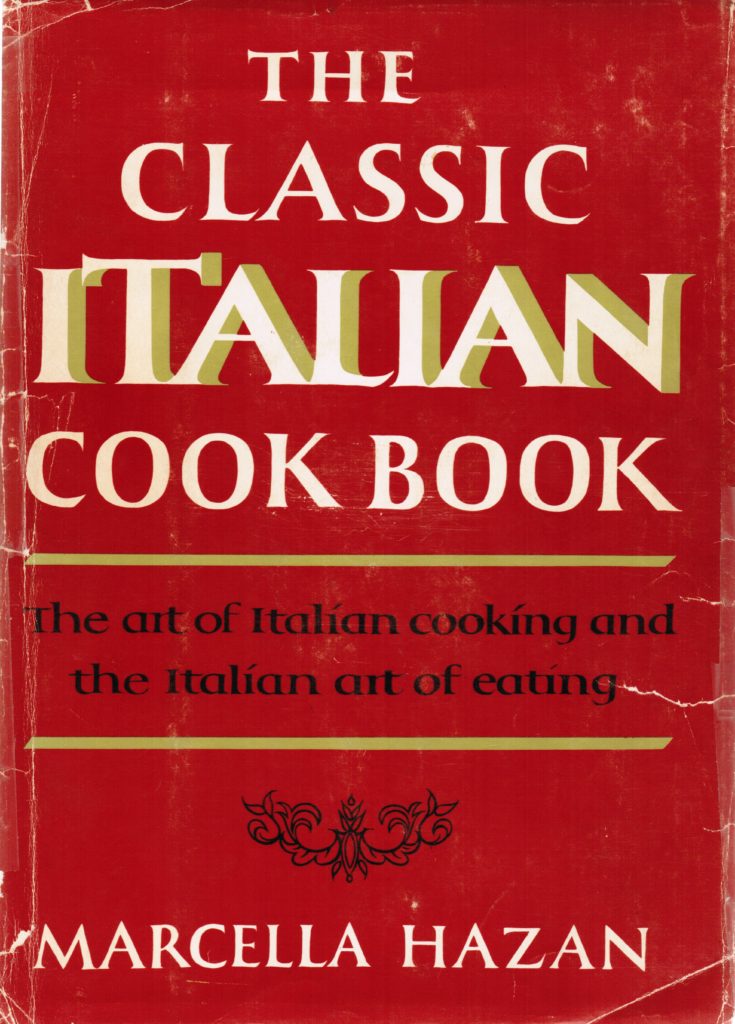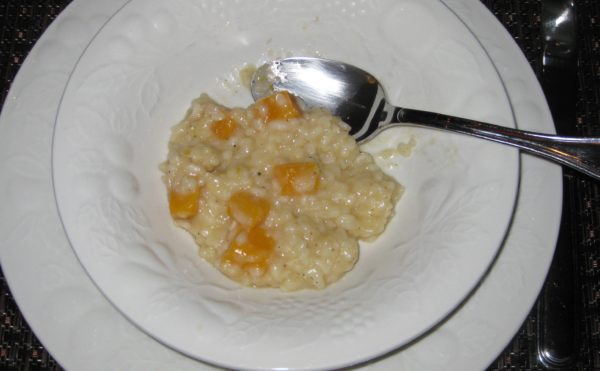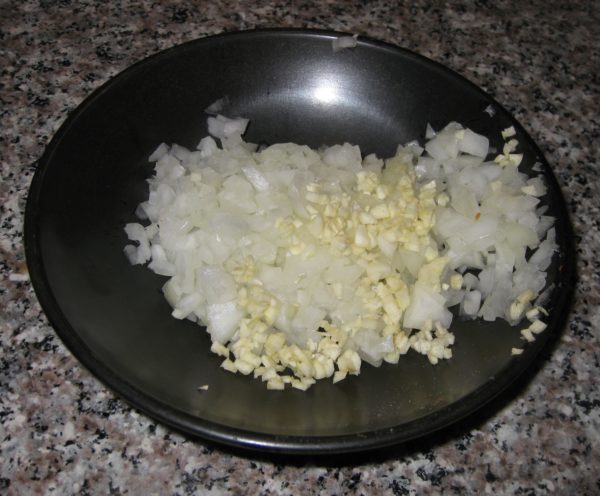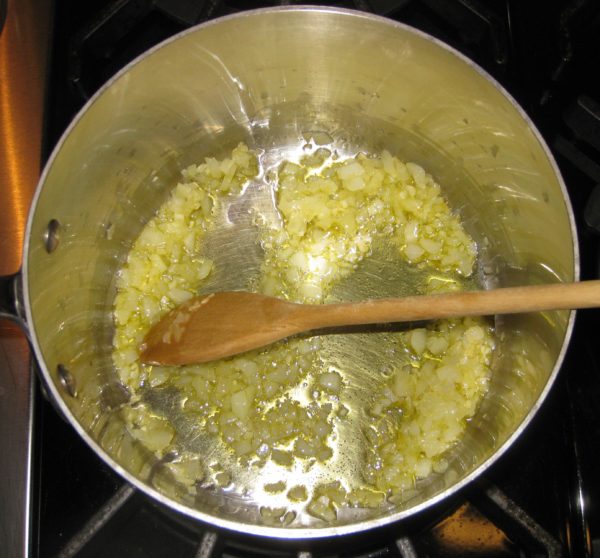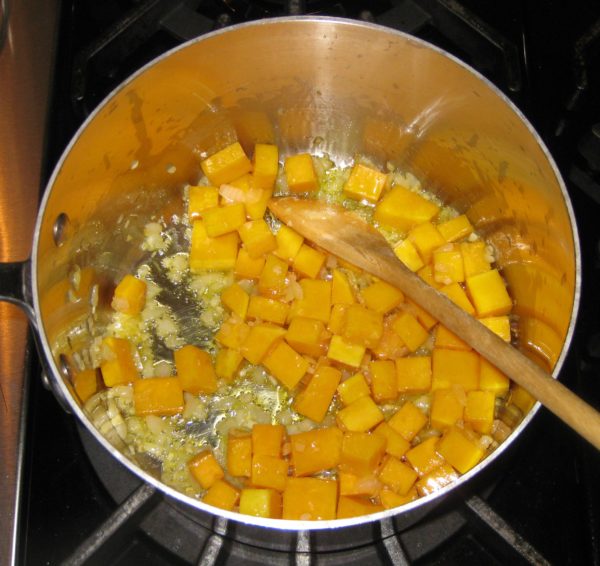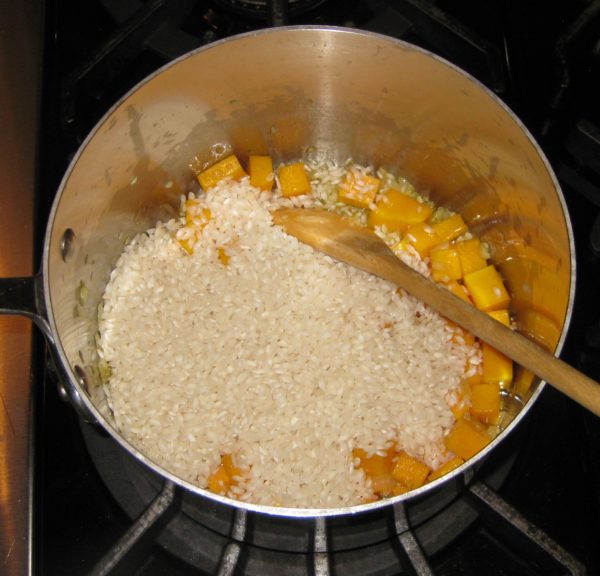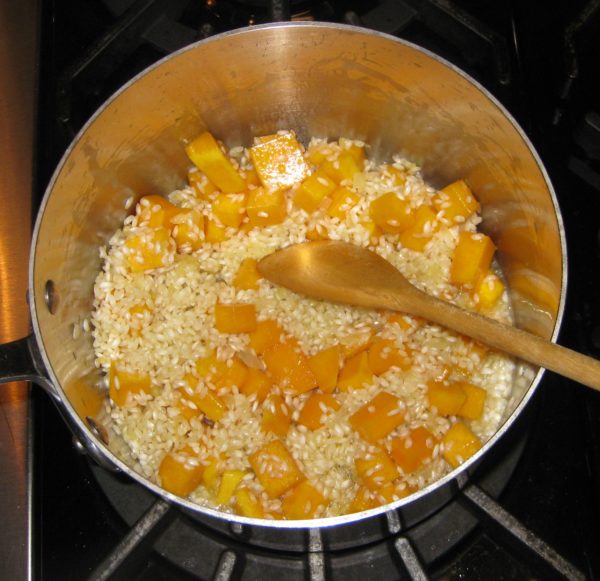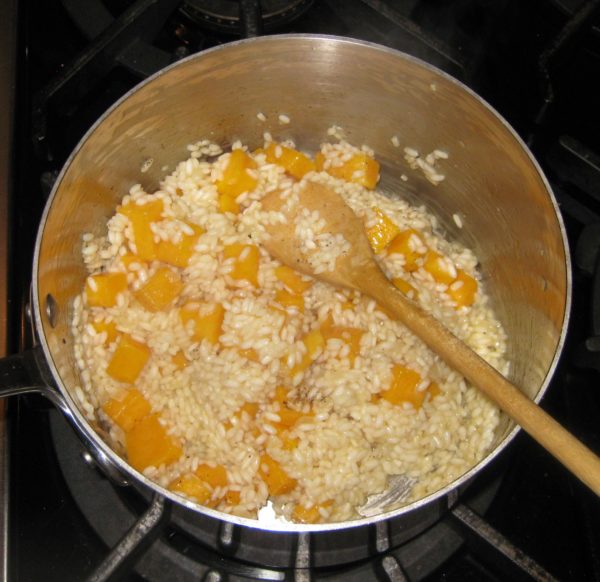June 25, 2018
If you do an internet search on Risotto Friulano you will turn up more entries for risotto con lo sclopit than any other.
Sclopit (bladder campion in English) is native to large parts of Europe and beyond. It is not native to the United States but grows abundantly from coast to coast. Its botanical name is Silene vulgaris.
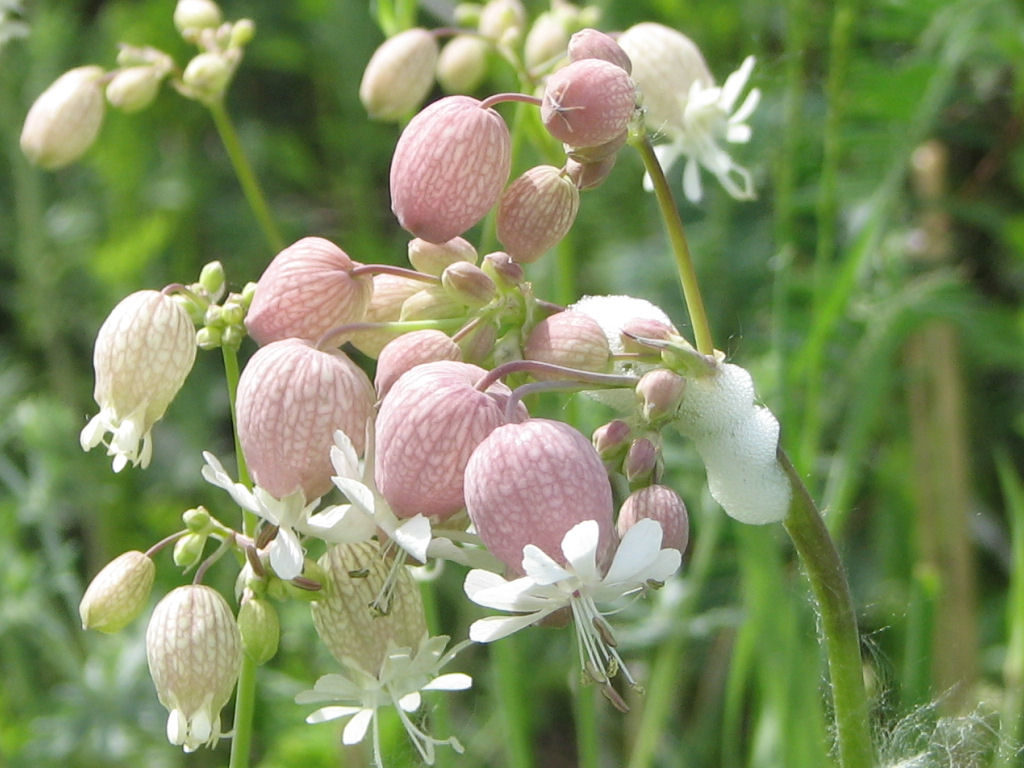
Follow us on your social media platform of choice
My mother-in-law uses homemade chicken broth, and her Friulan tomato sauce for her Risotto Friulano. Uncle Ray, her brother, uses canned beef broth instead of chicken broth. Neither uses risotto rice, opting for long-grain rice, and neither really follows the common risotto technique of adding liquid slowly and allowing it to evaporate before the next addition.
We have long discussions about these differences. While I don’t have a good explanation for the differences in technique other than cooking differences within their family, it’s my belief that the use of long-grain rice rather than short-grain “risotto” rice is a consequence of what was readily available when the family immigrated to the United States.
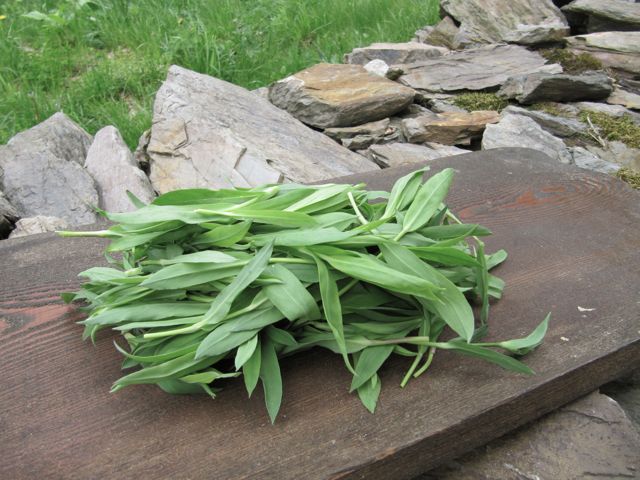
I have a number of cookbooks from Friuli and all the recipes for risotto use what the Italians would call “riso per risotto,” rice for risotto. It’s possible that this is a recent change in cooking habits in Friuli but I am more inclined to believe that the switch from risotto rice to long-grain rice happened in the United States, at least for my mother-in-law’s family.
Both my mother-in-law and Uncle Ray add enough liquid to their respective recipes for Risotto Friulano to make the final product pourable, like a traditional risotto. Without the more starchy riso per risotto and the risotto technique, however, the result is not as creamy but still very good…and very traditional within the family. Just ask my father-in-law, who is from Tuscany and not Friuli, whose Risotto Friulano he prefers! (Hint, he’ll tell you mine tastes good, but…)
Join our mailing list and you’ll never miss a recipe again!
The most common types of rice for risotto are Arborio, Carnaroli, and Vialone Nano. Arborio is the easiest to find and it is what I use most of the time. Carnaroli and Vialone Nano are even more forgiving than Arborio as they are harder to overcook. They are more difficult to source in American markets, however.
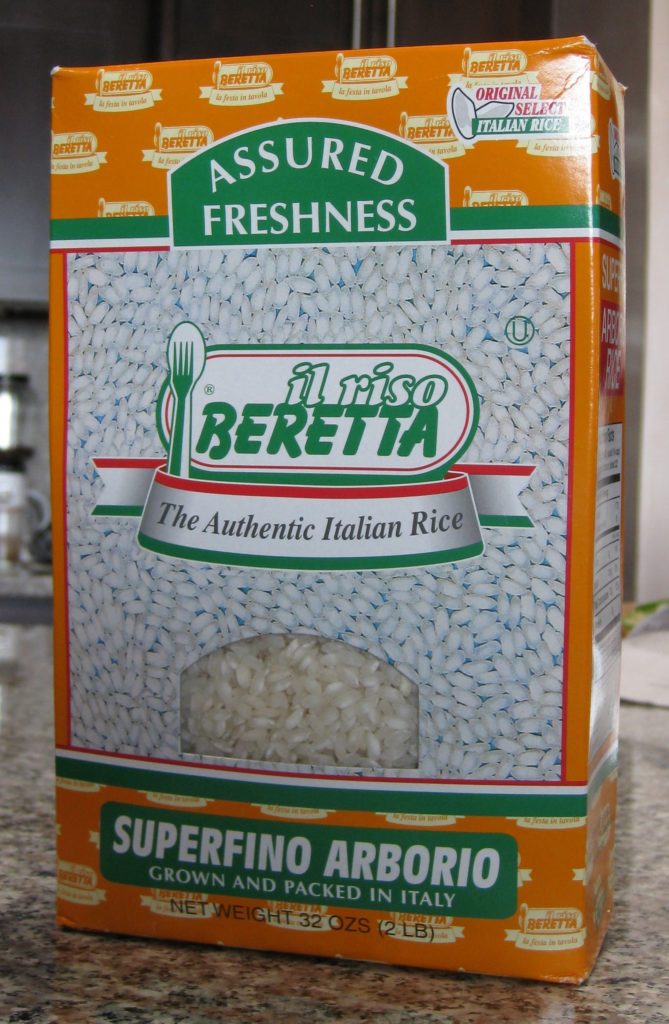
When I make Risotto Friulano, I follow standard risotto technique and use short-grain Italian rice. I hope you enjoy it!
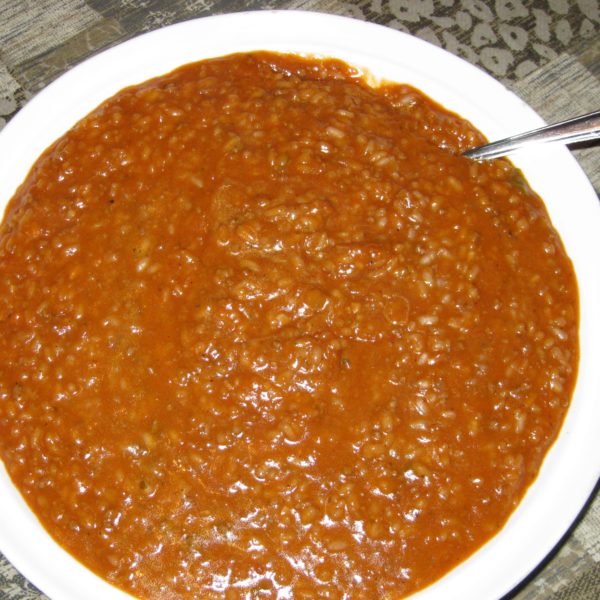
| Prep Time | 10 minutes |
| Cook Time | 45 minutes |
| Servings |
people
|
- 1/2 medium onion finely diced
- 2-3 cloves garlic minced
- 1/3 cup extra virgin olive oil
- 1/2 cup dry red wine
- 1 1/2 cups rice for risotto Arborio, Carnaroli or Vialone Nano
- 8 cups beef broth preferably homemade and unsalted
- 1 1/2 teaspoons salt
- black pepper freshly ground to taste
- 2 cups Salsa Friulana see Notes for links
- 2/3 cup Parmesan cheese grated
Ingredients
|

|
- Bring the broth and the Salsa Friulana to a bare simmer in separate pots.
- Heat a two or three quart heavy-bottomed saucepan over medium-high heat. Add the olive oil.
- Briefly sauté the onion in the oil. As the liquid from the onion evaporates and the onion just begins to turn translucent, reduce the heat to medium add the garlic.
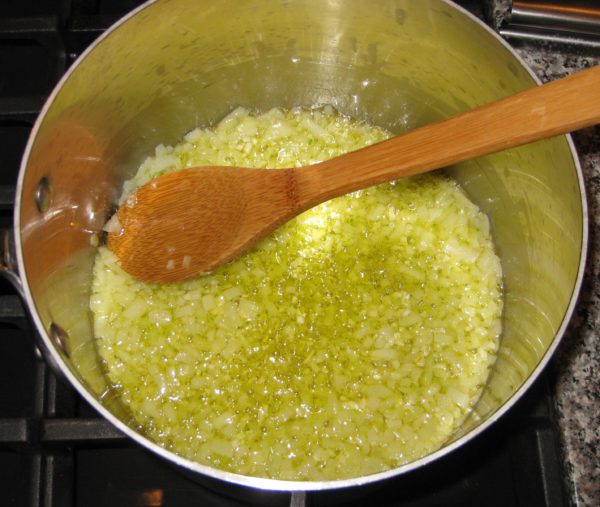
- x
- Sauté on medium until the onion is translucent. Do not brown the onion or garlic. You may need to reduce the heat.
- When the onion is translucent, return the heat to medium high and add the rice.
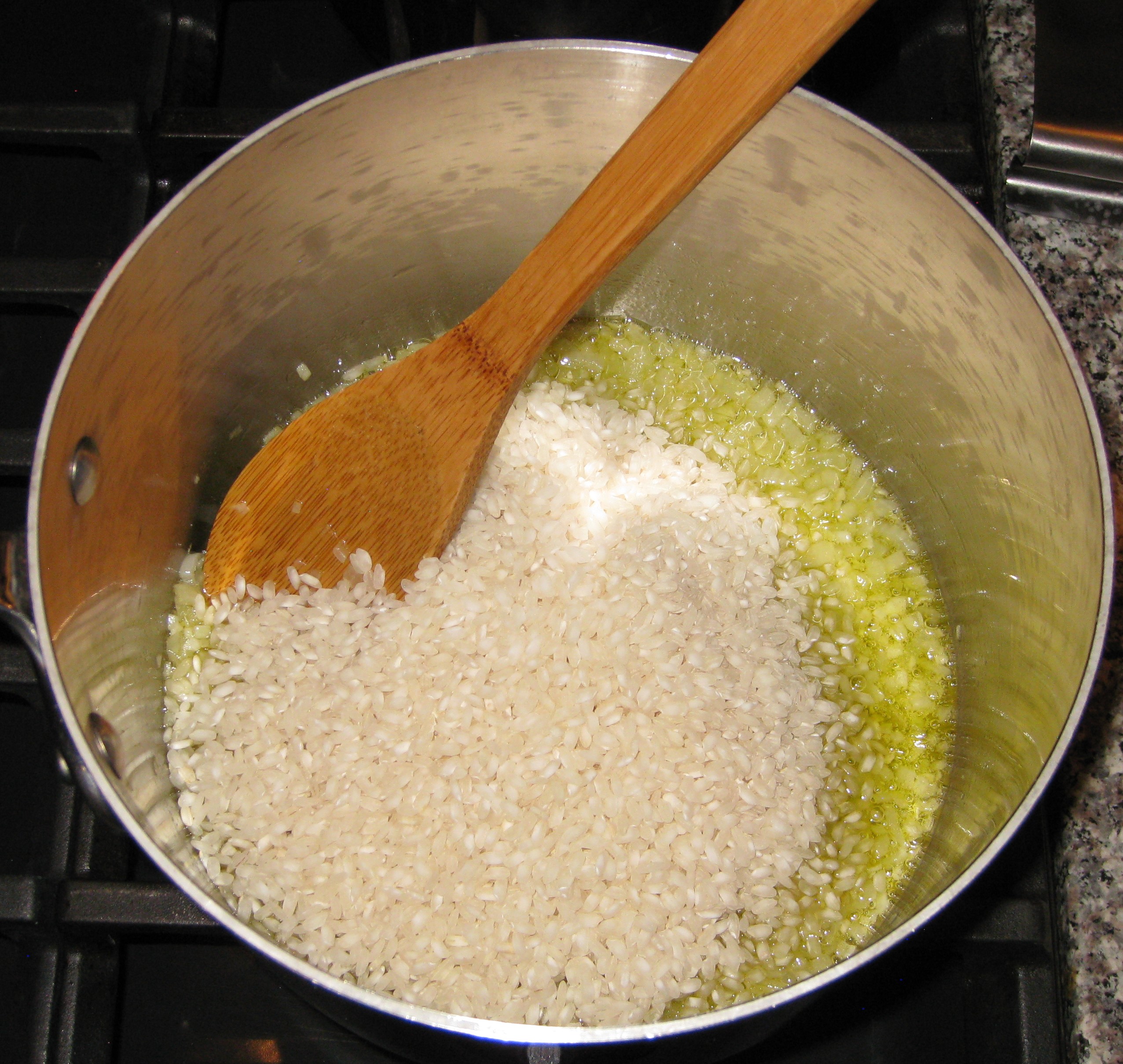
- Sauté for 3-5 minutes, until the rice grains are partially translucent. Do not brown the rice.
- The outer portion of the rice grains will get translucent while the inside will stay opaque white.
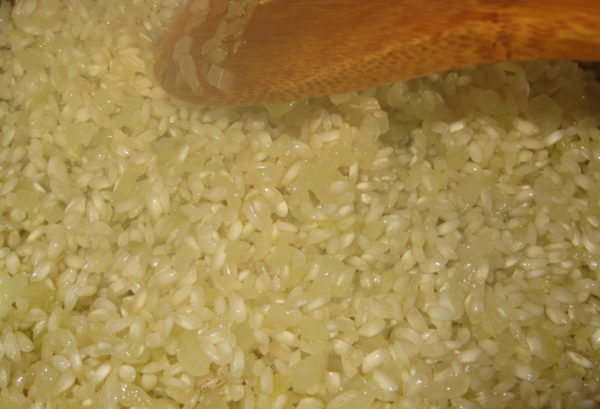
- Add the wine.
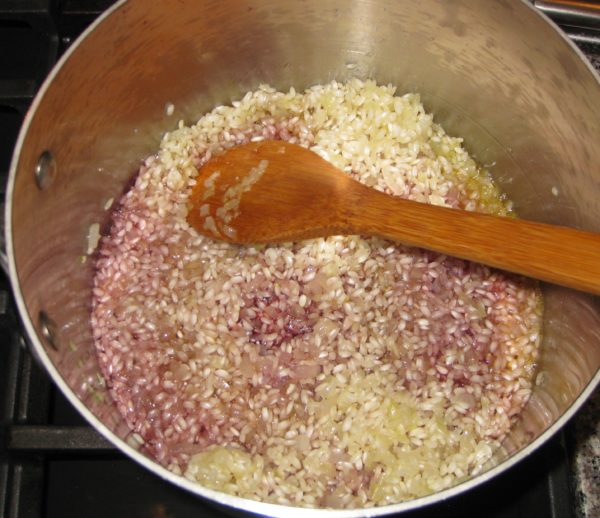
- Stir frequently, but not constantly, until the wine has totally evaporated. You will begin to see some starch leaching out of the rice. More and more of the starch will leach out as you cook the rice. This is what will make a creamy sauce.
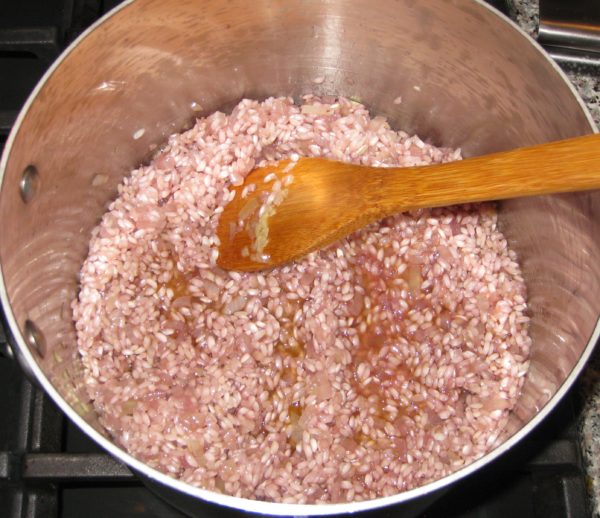
- When the wine has evaporated, add one ladle of simmering broth, approximately 1/3 cup, and the salt. Stir thoroughly paying particular attention to loosening any spots where the starch seems to be sticking to the bottom of the pan. You don’t want to brown (or worse yet, burn) the starch.
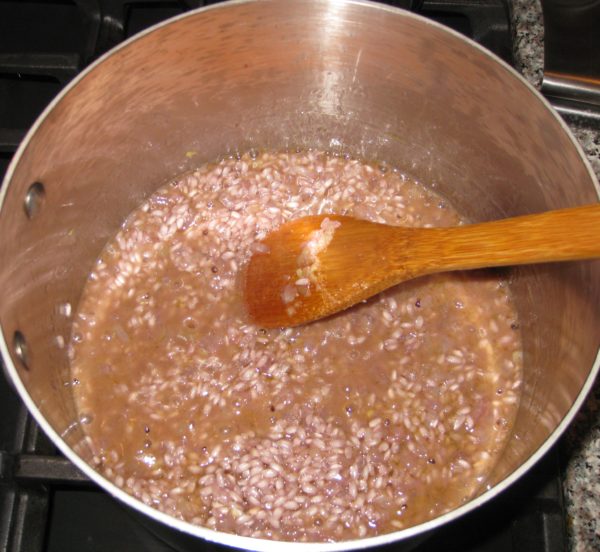
- Cook, stirring frequently but not constantly, until the broth has evaporated.
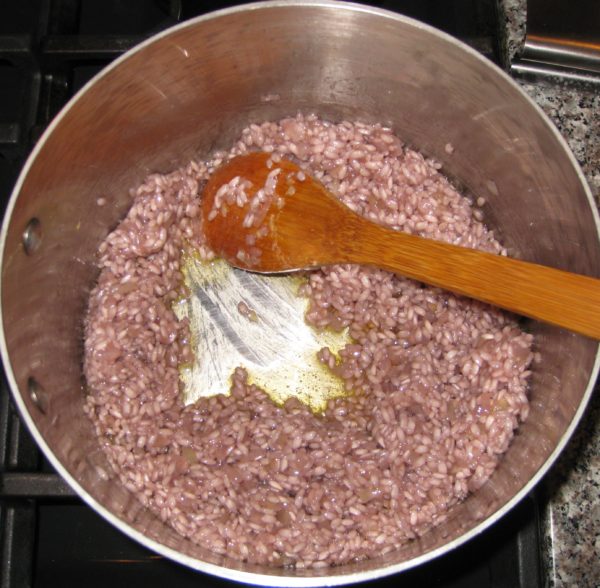
- Keep repeating the process with 1/3 cup of broth, cooking, stirring, loosening any spots that are sticking, and allowing the liquid to evaporate, until you have used approximately 5 cups of the broth. The heat should stay as close as possible to medium high. The moderate boiling of the liquid will coax starch out of the rice to create the creaminess that is the hallmark of a good risotto.
- Add 1 ½ cups of Salsa Friulana and cook until some of the liquid has evaporated. It will not be possible to cook the rice until dry once the sauce is added.
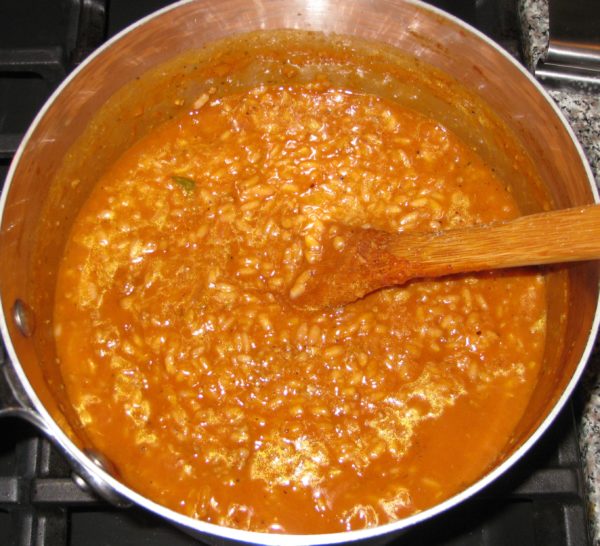
- Season with black pepper to taste.
- Continue adding broth, one ladle at a time, until the rice is cooked and creamy but still al dente at the very center.
- Remove the rice from the heat. Stir in the Parmesan cheese then the remaining ½ cup of Salsa Friulana.
- Still off the heat, add hot broth, a little at a time, to create a creamy, pourable risotto, adding only as much as the starchy liquid in the risotto will absorb.
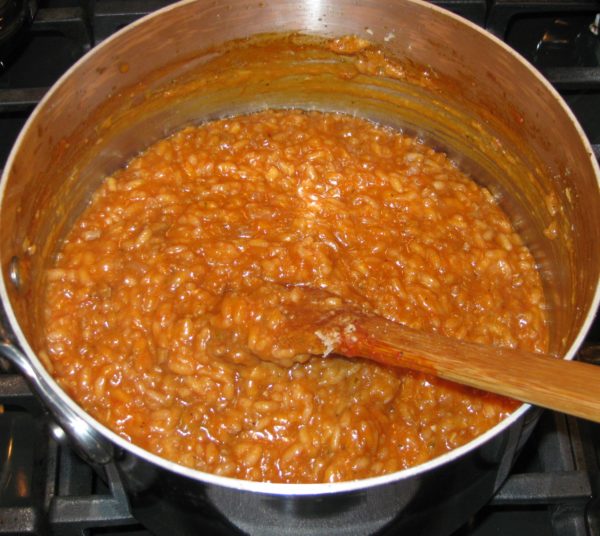
- Taste and adjust seasoning.
- Serve immediately. Pass additional Parmesan cheese at the table.

This is where you’ll find the recipe for Marisa’s Mystical Meatballs.
You can find my mother-in-law’s recipe for Salsa Friulana here and Ivana’s recipe here.
Copyright © 2018 by Villa Sentieri, LLC. All rights reserved.

